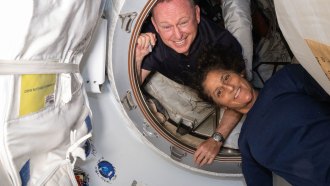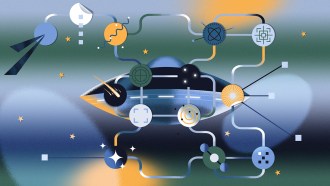
Artificial Intelligence
Talking to a chatbot may weaken someone’s belief in conspiracy theories
AI might help lift conspiracy theorists out of the rabbit hole, but some researchers say proceed with caution.
By Sujata Gupta
Every print subscription comes with full digital access

AI might help lift conspiracy theorists out of the rabbit hole, but some researchers say proceed with caution.

The fungus thrives on everything from soy pulp to bland custards, turning them into digestible foods with a surprisingly pleasant flavor.

Part memoir, part geology explainer, Marcia Bjornerud’s latest book explores the hidden wisdom of Earth’s rocks.

An analysis of a university collection found that the vibrant pigments coating some Victorian-era tomes exceed exposure limits for the heavy metal.

Butch Wilmore and Sunita Williams join more than a dozen astronauts who’ve been stranded in space by mechanics, weather or geopolitics since the 1970s.

UFOs have been rebranded as UAPs (unidentified anomalous phenomena). Probably not aliens, they might impact national security and aircraft safety.

Neuroscientist Christof Koch’s new book discusses how information integration in the brain leads to consciousness and whether AI will ever be self-aware.

Science News talked to a meteorologist and Twisters’ tornado consultant to separate fact from fiction in Hollywood’s latest extreme weather thriller.

The Last Drop tackles global water problems and explores how humans can better manage the precious resource.

A controversial idea drawing on findings from the animal kingdom suggests there’s more to human stature than genetics and nutrition.
Subscribers, enter your e-mail address for full access to the Science News archives and digital editions.
Not a subscriber?
Become one now.